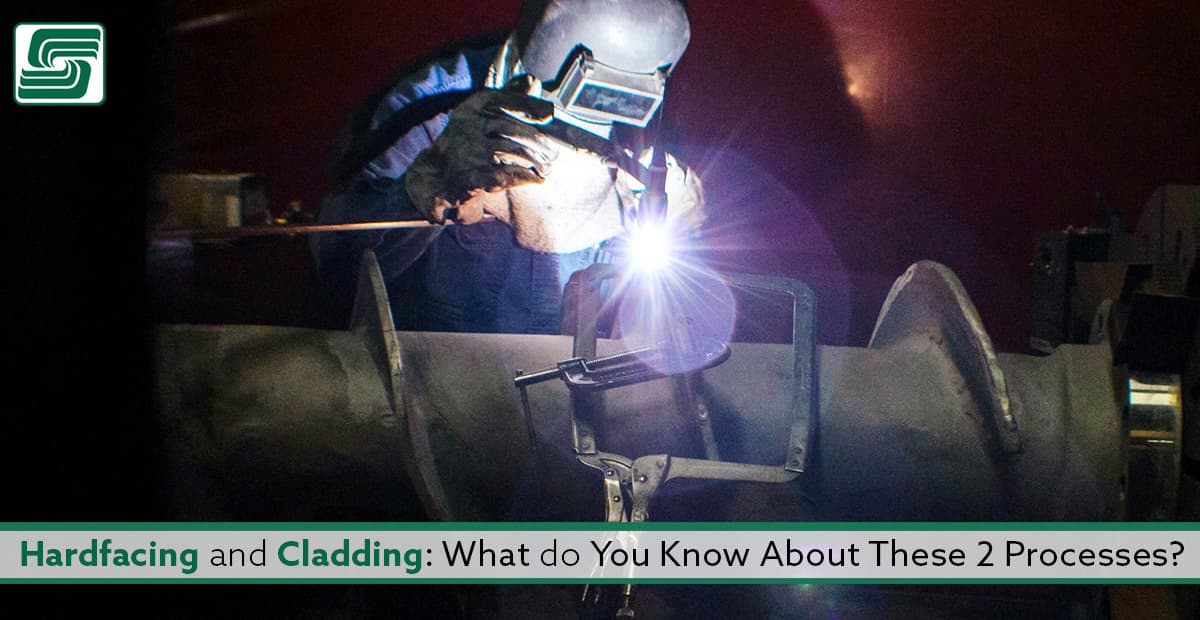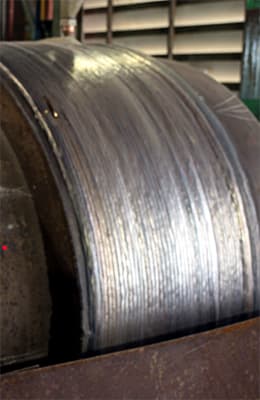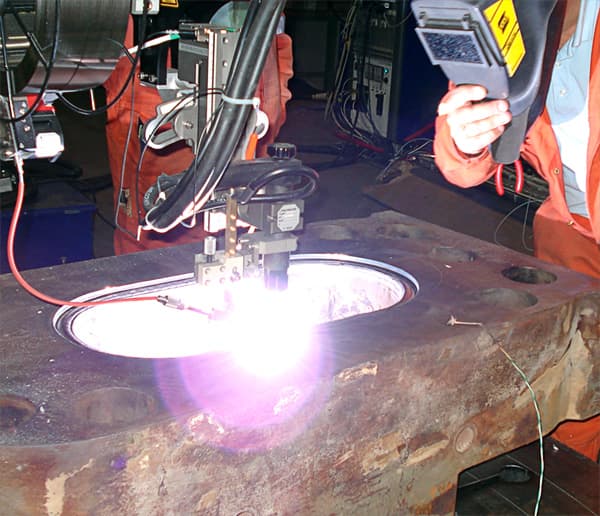
Hardfacing and cladding are similar processes often used in welding and metalworking. While there are similarities between the two, there are also many differences.
To help you understand the differences between hardfacing and cladding, this blog article will take you through the basics. We’ll look at what hardfacing and cladding are, their similarities and differences, the types of hardfacing and cladding processes, the benefits of hardfacing and cladding, the challenges of hardfacing and cladding, the best hardfacing and cladding materials, and the best hardfacing and cladding techniques.
What is Hardfacing?
Hardfacing is a welding process used to deposit wear-resistant layers on metal components typically used on components subject to high wear and tear, such as valves, pump parts, and other machinery parts. The hardfacing process involves depositing metal alloys on the surface of the component to form a protective layer. This layer increases the component’s resistance to wear and tear, making it last longer and perform better.
Here's an intro to the hardfacing process:
 The process of hardfacing includes several techniques, including manual arc welding, automatic arc welding, and TIG welding. The most common type of hardfacing is manual arc welding, often used to repair or reinforce damaged components because it's strong and durable, making it ideal for high-wear applications.
The process of hardfacing includes several techniques, including manual arc welding, automatic arc welding, and TIG welding. The most common type of hardfacing is manual arc welding, often used to repair or reinforce damaged components because it's strong and durable, making it ideal for high-wear applications.
There are many industries that use hardfacing, here are the most common:
- Agriculture
- Cement
- Chemical
- Construction
- Energy (mining, oil and gas)
- Marine
- Mining
- Paper
- Pharmaceutical
- Steel
What is Cladding?
Cladding is a welding process that involves depositing a metal layer on the component's surface to increase its corrosion resistance against harsh environments, such as chemicals, water, and extreme temperatures. The cladding process involves depositing a layer of metal on the component’s surface, usually stainless steel, and this layer acts as a barrier and prevents corrosion and wear.
Here's an intro to the cladding process:
 The cladding process includes several techniques, including manual arc welding, automatic arc welding, and TIG welding. Manual arc welding is the most common type of cladding, often used to repair or reinforce damaged components. The cladding weld is strong and durable, making it ideal for high-corrosion applications.
The cladding process includes several techniques, including manual arc welding, automatic arc welding, and TIG welding. Manual arc welding is the most common type of cladding, often used to repair or reinforce damaged components. The cladding weld is strong and durable, making it ideal for high-corrosion applications.
As with hardfacing, here are the most common industries relying on the cladding process:
- Aerospace
- Automotive
- Chemical
- Energy (nuclear, oil and gas)
- Food processing
- Marine
- Medical
- Mining
- Pharmaceutical
- Semiconductor
The Similarities Between Hardfacing and Cladding
While hardfacing and cladding are distinct processes, they share some similarities. Both processes:
- Involve depositing a metal layer on the component’s surface to protect it from wear and corrosion.
- Both processes use manual arc welding and other techniques, such as TIG welding.
- Require a skilled welder to ensure high-quality welds.
The Differences Between Hardfacing and Cladding
Although there are some similarities between hardfacing and cladding, there are also some key differences. The primary difference is the type of protection each process provides.
- Hardfacing provides wear resistance.
- Hardfacing typically involves depositing an alloy of iron and carbon.
- Cladding provides corrosion resistance.
- Cladding typically involves depositing a layer of stainless steel.
Hardfacing versus Cladding
Titanova, Inc, is a Missouri company calling itself "...a premiere supplier of novel material processing solutions based on diode lasers."
As their description suggests, lasers are a primary tool for their processes and they've produced this quick, just-over-a-minute video comparing hardfacing to cladding.
Types of Hardfacing and Cladding Processes
There are a variety of hardfacing and cladding processes available, each with its own advantages and disadvantages. The most common hardfacing and cladding processes are manual arc welding, automatic arc welding, and TIG welding.
- Manual arc welding is the most common type of hardfacing and cladding process. It is simple to use and deposits both hardfacing and cladding alloys. However, it is less precise than other processes and can cause incomplete welds.
- Automatic arc welding is a more precise process than manual arc welding, often used when precise welds are required, such as in the automotive and aerospace industries. It is a more complex process than manual arc welding and requires a skilled welder to ensure high-quality welds.
- TIG welding is the most precise type of hardfacing and cladding process, often used for hardfacing and cladding in the medical and nuclear industries, where precise welds are essential. It is a complex process that requires a skilled welder and is more expensive than other processes.
The Benefits of Hardfacing and Cladding
Hardfacing and cladding provide a wide range of benefits, including increased wear and corrosion resistance, improved performance, and reduced maintenance costs. The hardfacing and cladding processes also add strength and durability to components, making them last longer and perform better.
Fabricators complete both processes in a short amount of time, making them ideal for time-sensitive projects.
The Challenges of Hardfacing and Cladding
Although hardfacing and cladding offer several benefits, they also come with some challenges. The processes require a skilled welder to ensure high-quality welds, and they can be expensive. In addition, hardfacing and cladding materials can be difficult to find.
The Best Hardfacing and Cladding Materials
The best hardfacing and cladding materials are strong and durable, with the most common hardfacing material being an alloy of iron and carbon. In contrast, the most common cladding material is stainless steel. Other materials, such as titanium, cobalt, and nickel, work for both processes, too.
The application determines what materials to use. For example, they often use stainless steel for cladding components in corrosive environments, while titanium for hardfacing components is subject to high wear and tear.
Conclusion
Hardfacing and cladding are similar processes used in welding and metalworking. While there are similarities between the two, there are also many differences. Hardfacing deposits wear-resistant layers on components, while cladding deposits corrosion-resistant layers. The application determines the best hardfacing and cladding materials and techniques.
Understanding the differences between hardfacing and cladding is essential for ensuring the best results. By understanding the similarities and differences between the two processes, you can choose the best materials and techniques for your application. So, whether you’re looking to repair or reinforce a component, understand the differences between hardfacing and cladding.
Image Sources: Cladding Installation • Hardfacing Installation